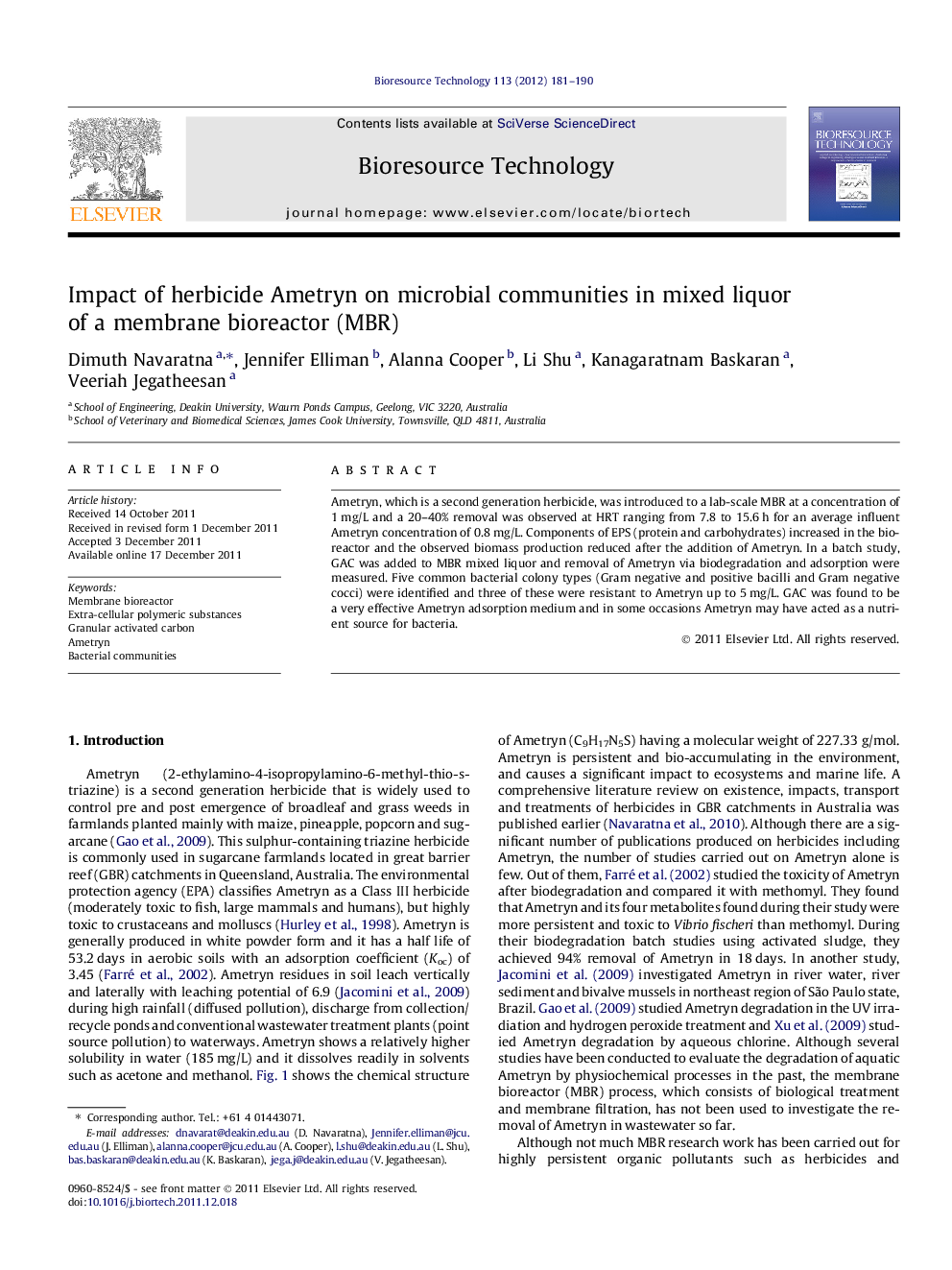| Article ID | Journal | Published Year | Pages | File Type |
|---|---|---|---|---|
| 681469 | Bioresource Technology | 2012 | 10 Pages |
Ametryn, which is a second generation herbicide, was introduced to a lab-scale MBR at a concentration of 1 mg/L and a 20–40% removal was observed at HRT ranging from 7.8 to 15.6 h for an average influent Ametryn concentration of 0.8 mg/L. Components of EPS (protein and carbohydrates) increased in the bioreactor and the observed biomass production reduced after the addition of Ametryn. In a batch study, GAC was added to MBR mixed liquor and removal of Ametryn via biodegradation and adsorption were measured. Five common bacterial colony types (Gram negative and positive bacilli and Gram negative cocci) were identified and three of these were resistant to Ametryn up to 5 mg/L. GAC was found to be a very effective Ametryn adsorption medium and in some occasions Ametryn may have acted as a nutrient source for bacteria.
► Herbicide Ametryn was introduced to a hybrid lab-scale MBR and studied the performance and the sludge conditions. ► A 20–40% removal of Ametryn was obtained from the MBR and the remainder was removed from UV and GAC treatment. ► Addition of Ametryn, increased the production of EPS and reduced the biomass production. ► A batch study revealed five common bacterial colony types and found three types were resistant to Ametryn.
